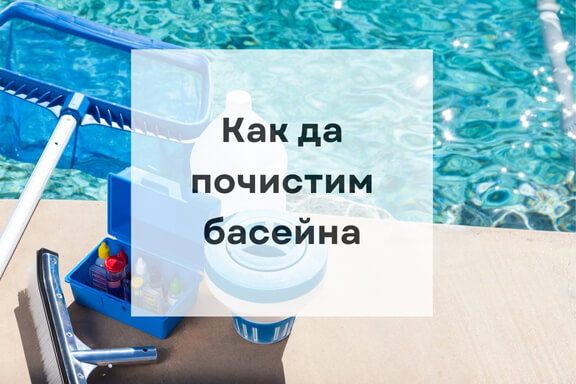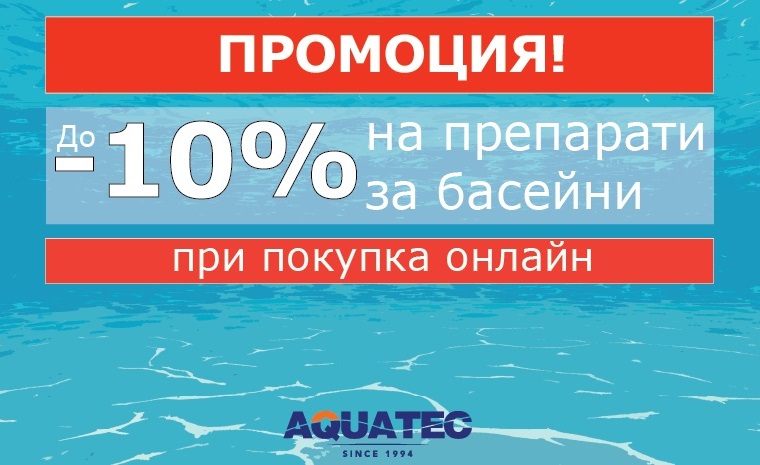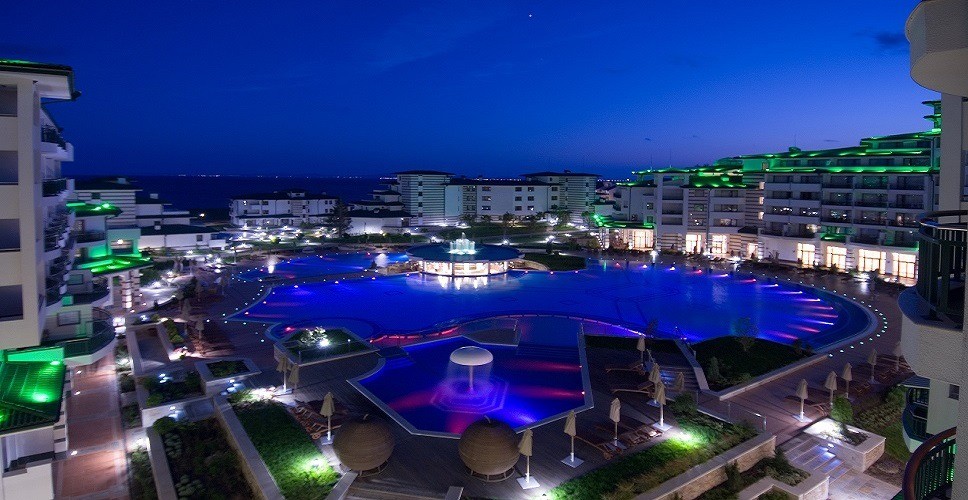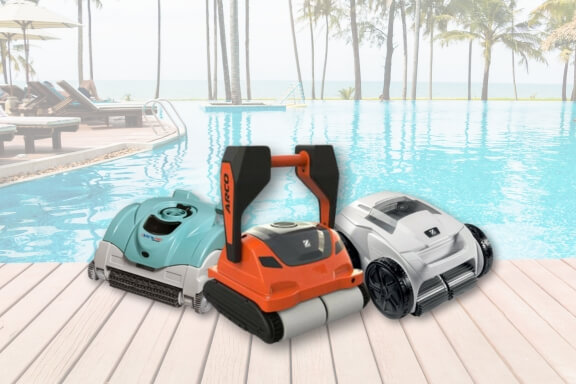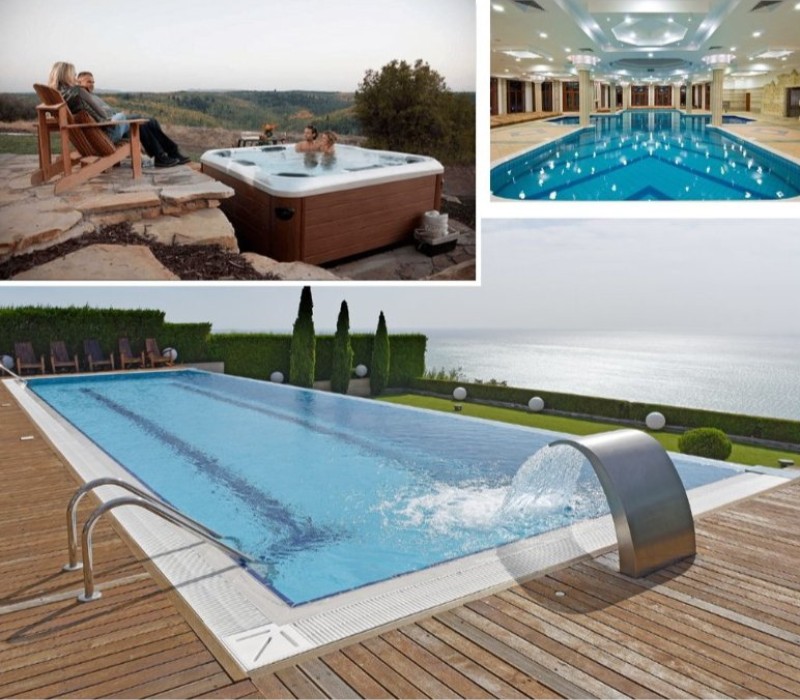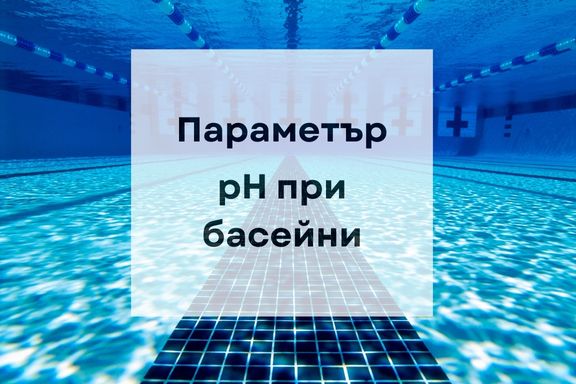Proper pool cleaning and subsequent maintenance are key not only to crystal clear water, but also to providing a healthy and safe swimming environment. If a pool is not cleaned properly, the water in it can become cloudy and become a breeding ground for bacteria and algae.
In this article, we'll go over all the important steps involved in proper pool cleaning.
Materials and equipment needed for cleaning the pool
Before we move on to the actual cleaning steps, make sure you have all the necessary pool cleaning equipment, materials and equipment, such as:
- Caps and wipers - different types of brushes and attachments are used to clean different surfaces and areas of the pool. С the pool cap you can skim off the waste floating on the surface of the water, floor cleaners (brushes with Vacuum head for pool cleaning) are the right tool for cleaning the bottom of the pool, and the waterline brush is the most convenient tool for removing dirt on the ceramic pool liner. If you want to increase the cleaning efficiency, you can also go for semi-automatic pool floor cleaners that connect through the skimmer to the filtration pump.
- Cleaner robot for swimming pool - this type of pool cleaners are of great use to people who maintain swimming pools, whether their own, public, or offer such a service. They largely automate cleaning and allow you to get on with other activities on pool maintenance.
- Testers for swimming pools – the water testers are a constant companion in the maintenance of a swimming pool. They measure pH levels, chlorine, and other important water parameters, helping you maintain a balanced chemical environment.
- Chemistry for swimming pools - the right ones preparations for swimming pools include disinfectant chemicals, algaecides, shock treatments and other cleaning agents that help kill bacteria, algae and microorganisms in the pool water.
- Disinfection system - if you have an automatic system like UV sterilizer or electrolyzer, make sure it is properly set and functioning optimally.
Preparing for the pool cleaning
Before we get into specific pool cleaning techniques, here's what you need to do to prepare:
- Remove the winter cover - before removing the cover, remove large dirt and stagnant water. Once removed, allow it to dry somewhere dry and outdoors before taking it in for storage. Winter pool cover is kept in a cool, dry place until the summer season is over, when you can use it again.
- Remove contaminants from the water surface - use the cap to remove any floating contaminants from the water surface, such as leaves, insects and other small debris. This will prevent them from sinking and settling to the bottom of the pool as you clean. It is a good idea to do this cleaning every day if you have an outdoor pool.
- Check the construction of the pool - Whether you have an indoor or outdoor pool, it's a good idea to check it for structural damage such as cracks, stains, loose tiles and more. These small damages could worsen over time, so it's important to fix them now. Intense swimming during the active summer sesine, as well as water flow stress can also affect the pool structure.
- Add water if necessary - it is normal that the water level in the pool has dropped after the winter season. In such situations, you should supplement the pool with clean water to be able to balance the chemigation properly.
- Measure water chemigation - use a water test to measure pH levels, chlorine and other important parameters. Evaluate its condition and determine if adjustments are needed before you start cleaning.
How to clean the pool surface?
The surface of the pool water is one of the first places where contaminants accumulate. Here's how to keep the water clean:
- Clean contaminants with a dropper - remove floating debris from the water surface - these are leaves, insects, twigs, and other small debris that accumulate at night or in windy weather.
- Clean the walls and boards with a brush - after you have removed the floating contaminants, use a brush to clean the water line and pool sides. Don't forget about the pool ladders and steps. Be sure to pay attention to the water line as well. Contamination on it is mainly formed by the use of beach oils and similar products that dissolve in the pool water and layer on the surface. Clean the water line with a brush. This will remove any stains or dirt stuck to the surfaces.
- Check for algae and other microorganisms - examine the surface of the water for algae or other microorganisms that may accumulate on it. This is an indicator that the water needs proper treatment.
Cleaning the filters and the pool pump
The filters and pump are key in maintaining the cleanliness and quality of the pool water. They are the most important when it comes to keeping particles, microorganisms and other contaminants that accumulate in the water. Without properly and optimally functioning filtration and circulation, further maintenance with chemicals becomes pointless. Here are some steps to help clean your pool filters and pump:
- Check the filters - they must be clean, without accumulated dirt. If the pool has cartridge (paper, cartridge) filters, flush them with a strong jet of water. Replace them if necessary with new ones. If you use sand filter for swimming pool, backwash the sand fill according to the filter instructions. It is good practice to flush the sand filters at least once a week, and even more often for heavier loads. For this purpose, monitor the filter pressure on the pressure gauge - in no case should the gauge needle enter the red zone.
- Check the condition of the pumps - check the pool pump for dirt and damage. Clean her basket. If you notice a build-up of dust or other contaminants, clean them carefully with a brush or cloth. Check that the filter pump connections are tight. Look for any leaks or faults in the system and repair them if present.
How to clean the bottom of the pool?
Pollutants such as sand, dust, leaves and other debris accumulate at the bottom of the pool and create an unpleasant atmosphere, contributing to the growth of green algae and bacteria. The bottom of the pool is cleaned last because this is where the dirt that has not been caught by the pool filters settles. Here's how to keep your pool bottom clean:
- Use a squeegee - this tool is specially designed to collect contaminants such as sand, dust and others from the bottom of the pool. Run the floor cleaner over the bottom thoroughly, taking care to cover the entire area.
- Remove hard-to-reach contaminants - Be sure to pay special attention to areas that are difficult to clean. These are places around steps, water loungers, corners of the pool and anything else that has too many corners, tight spaces and crevices. Make sure you clean each area thoroughly to prevent dirt from accumulating and algae from forming.
- Use a special brush for bottom - once you have fouled the rougher build-up from the bottom of the pool, you can use a special bottom brush to remove more stubborn stains and dirt.
Chemical pool maintenance and water balancing
One of the most important aspects in maintaining pool cleanliness is the proper use of chemicals. Balanced water is not only more enjoyable to swim in, but it also prevents the growth of algae (single-celled algae) and protects pool equipment. Even if the water looks clear, it is not biologically clean - this is exactly what disinfectant treatment requires.
In public pools, this function is performed by automatic dosing and control systems, but in private pools we are responsible for keeping the water clean. Here's what you need to know about using pool chemicals:
- Measure levels of chemical parameters - use water testers to measure pH levels, chlorine and other important parameters that affect the pool's water quality. Deviations from optimal parameters mean that adjustments are needed.
- Adjust pH level - we have an entire manual on water pH in which we have covered this aspect of pool maintenance in detail and made the necessary recommendations. The pH level is not only important for enjoyable swimming and upright equipment, but also for the effectiveness of the other chemicals used in cleaning and maintaining a pool.
- Use chlorine - Chlorine is the main and universal disinfectant that helps to prevent the pool water from turning green. Use appropriate forms of chlorine, such as tablets, granules or liquid additives, to maintain an optimal chlorine level in the water. Use slow dissolving chlorine for pool water maintenance, and fast dissolving chlorine for shock treatment.
Another popular disinfectant is active oxygen, which is kinder to human skin and has no odor. The downside is that maintenance with active oxygen requires more commitment and attention because it evaporates in a short time.
If the water temperature in the pool is higher, then it is better to turn to disinfection with bromine, which does not lose its effectiveness at high temperatures, unlike chlorine. - Use algaecides and shock treatments - periodic use of algaecides and shock doses of chemistry (if necessary) help prevent algae and eliminate organic contaminants in the water.
Preventive tips for pool cleanliness
How not to turn the pool water green?
Despite advice to treat the pool water with chlorine, this may still not be enough and you may notice algae forming. If this is the case, it is a good idea to include a product that prevents algae growth, known as an anti-algae or algaecide, in your maintenance routine.
How not to have cloudy pool water?
Turbid water sometimes occurs due to the accumulation of fine and light particles that cannot be caught by the pool filter. If this happens, you can use a coagulant to clump these particles and form a sludge that is easy to clean from the bottom of the pool using a floor cleaner.
How to treat pool water after an active season or rainfall?
Overuse of the pool, as well as heavy rainfall, dilutes the chemistry in the water and makes it ineffective. In such situations, shock treatment of the pool with chemicals is necessary, and you must measure the chemical indicators beforehand.
